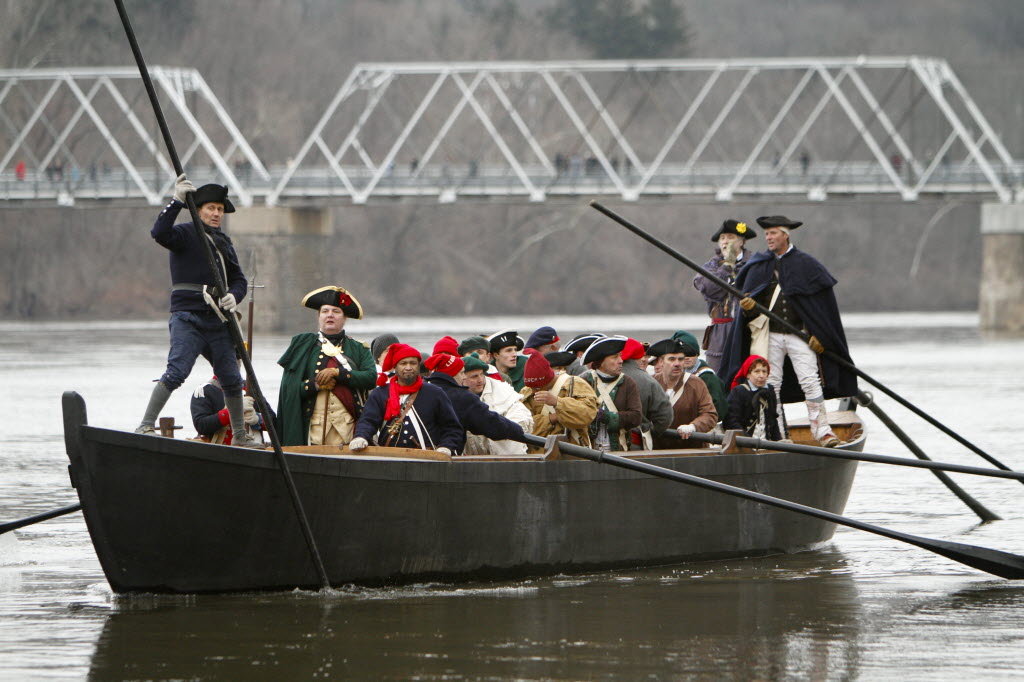The summer and fall of 1776 marked a low time in the American Revolution. The Continental Army suffered a series of defeats at the hands of the British and their Hessian mercenaries, and was pushed out of New York. Enlistments faltered, the Continental Congress was discouraged, Loyalists were emboldened and Patriots on the run.
Washington took a gamble. On the night of December 25th, 1776, he crossed the icy Delaware River with 2,400 men, using Durham boats operated by Glover's 14th Regiment, comprised largely of Marblehead (MA) fishermen and watermen.
Attacking from three directions, the attack was an extraordinary success. They killed, wounded or captured most of the 1,000 man Hessian force, with only two deaths and a few casualties. Reports that the Germans were drunk and asleep were not accurate: but they did not expect attack and had not posted adequate sentries and were making no patrols.
The strategic impact of the battle was far greater than the military significance. It proved Americans could defeat European Regulars; encouraged the Continental Congress, reinvigorated enlistments, and perhaps most importantly, convinced the French that the American cause was worthy of their support.
In Marblehead's Abbott Hall is a copy of the famous painting of Washington Crossing the Delaware - ironically painted by a German, Emanuel Leutze. It's not particularly accurate: the flag shown was not in use at the time, and Durham boats were 60 feet long. I prefer this version. Oh - and Frohe Weihnachten!

Washington took a gamble. On the night of December 25th, 1776, he crossed the icy Delaware River with 2,400 men, using Durham boats operated by Glover's 14th Regiment, comprised largely of Marblehead (MA) fishermen and watermen.
Attacking from three directions, the attack was an extraordinary success. They killed, wounded or captured most of the 1,000 man Hessian force, with only two deaths and a few casualties. Reports that the Germans were drunk and asleep were not accurate: but they did not expect attack and had not posted adequate sentries and were making no patrols.
The strategic impact of the battle was far greater than the military significance. It proved Americans could defeat European Regulars; encouraged the Continental Congress, reinvigorated enlistments, and perhaps most importantly, convinced the French that the American cause was worthy of their support.
In Marblehead's Abbott Hall is a copy of the famous painting of Washington Crossing the Delaware - ironically painted by a German, Emanuel Leutze. It's not particularly accurate: the flag shown was not in use at the time, and Durham boats were 60 feet long. I prefer this version. Oh - and Frohe Weihnachten!

Last edited:


![Devil [devil] [devil]](/xen/styles/default/xenforo/smilies.vb/015.gif)
![Smile [smile] [smile]](/xen/styles/default/xenforo/smilies.vb/001.gif)